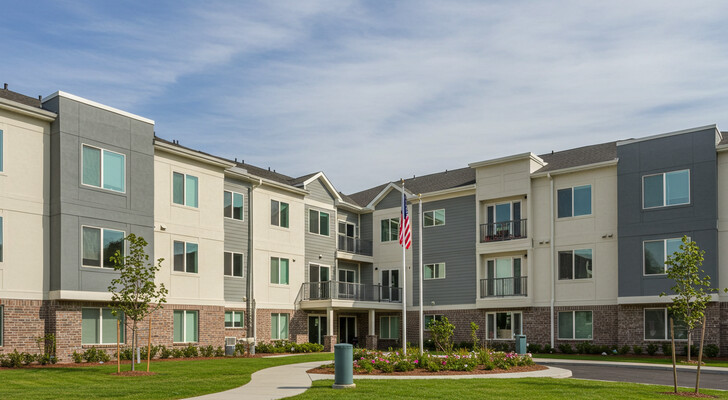Let’s be honest, retirement isn’t always the carefree chapter we once pictured. Families feel the pressure too. Maybe your mom’s getting too isolated in that big house. Or your dad’s knees can’t quite handle the stairs anymore. And you’re stuck in the middle, trying to find something safe, affordable, and most of all, dignified. That’s where low-cost one-bedroom rentals for seniors come in. They’re not just smaller apartments. Done right, they’re comfortable, manageable, and full of little details that can make aging a whole lot easier. But finding the right fit? That’s where things get tricky. Let me walk you through it.

So What Does “Low-Cost” Really Mean for Seniors?
It’s not a one-size-fits-all number, but let’s break it down. A genuinely low-cost senior rental in 2025 might range from about $500 to $1200 a month. That may sound reasonable, but it really depends where you’re looking.
In rural Ohio, you might find something solid for $600. In Southern California, you’re lucky if you can grab a spot under $1400 even with senior discounts. But here’s the thing, many seniors don’t have a lot of wiggle room. If you’re relying on Social Security alone, the national average benefit is about $1900 a month. After groceries, meds, and utilities, housing can’t eat up the lion’s share.
That’s why programs like HUD’s Section 202 Supportive Housing for the Elderly or state-funded senior housing options are lifelines. They don’t just drop rent to manageable levels, they also prioritize accessibility, safety, and proximity to necessary services.
Why One-Bedroom Units Hit the Sweet Spot
You don’t need a mansion when you’re 75. In fact, most people don’t even want it. One-bedroom apartments are cozy enough to clean without breaking your back, but private enough to feel like your own slice of the world.
They’re perfect for widows or widowers, folks downsizing after kids move out, or just anyone who’s over the daily grind of home maintenance. Fewer rooms mean fewer chances of tripping over something, and less square footage means lower utility bills too. You know what else? A one-bedroom gives you your own front door to shut when you need quiet and a living room to welcome guests when you don’t.
Who’s Looking for These Places and Why
This isn’t just about the stereotypical “grandma in a rocking chair” scenario. More seniors today are active, independent, and even still working part-time. A lot of them just want peace of mind, not pity.
Some are recent retirees realizing their suburban mortgage doesn’t make sense anymore. Others are single again after decades of marriage and don’t want to live in silence. Some just want to be closer to grandkids but not live with them. Totally understandable. And for adult children watching their parents navigate this new phase, the goal is often simple: find something affordable that doesn’t sacrifice safety or dignity. It’s a tall order, but not impossible.
It’s the Little Things: What Makes a Place Truly Senior-Friendly
Grab bars in the shower aren’t just helpful, they’re non-negotiable. But there’s more to it than that.
A truly senior-friendly unit might have no stairs, wider doorways for walkers or wheelchairs, and easy-to-reach cabinets. You’d be surprised how often standard rentals overlook these basics. Even better, units in senior housing complexes often come with emergency call buttons, non-slip floors, and soundproof walls so you’re not hearing your neighbor’s TV at 2 a.m. But let’s zoom out a bit. Location matters too. Is there a grocery store nearby? A bus stop that doesn’t require walking six blocks uphill? Can you get to a pharmacy without asking your niece every time?
And community, don’t underestimate it. Some low-cost senior housing programs offer shared lounges, scheduled activities, or even meal programs. Loneliness is real, and the chance to play cards with a neighbor or just wave at someone familiar can make all the difference.
Where the Deals Are Hiding: Cities That Won’t Drain Your Wallet
If you’re open to moving or if you’re helping a parent who’s flexible, there are real gems out there.
Take Tulsa, Oklahoma, where affordable senior living is paired with a slower pace of life and low crime rates. Or Pittsburgh, Pennsylvania, a city reinventing itself with healthcare hubs and senior-specific housing programs. Albuquerque offers warm weather, stunning views, and some surprisingly budget-friendly rentals near senior centers.
Other strong contenders include Des Moines, Knoxville, and Spokane. These places often have active aging-in-place programs, subsidized rent options, and a community mindset that actually includes older residents, not just tolerates them. Pro tip, call the local Area Agency on Aging in any city you’re considering. They’ll often point you toward rentals or programs you wouldn’t find just browsing Zillow.
The Not-So-Fun Part: What to Watch Out For
Let’s be real, there’s a housing crunch for seniors in many areas. Waitlists can be long, and the paperwork? Exhausting. Sometimes affordable means “barely maintained.” Other times, it means you’re competing with 100 other applicants for one decent place.
Then there’s the stigma. Some seniors shy away from age-restricted buildings because they think it signals decline. Or they just don’t want to be around other seniors. That’s fair. But sometimes, those same buildings offer peace of mind you can’t get in a mixed-age complex where the guy upstairs is hosting 2 a.m. jam sessions. And yes, scams exist. Never pay for a list of “secret” rentals. If it sounds too good to be true, you know the rest.
How to Search Without Wanting to Scream
Here’s the thing, this process can feel overwhelming. But there are smart tools out there.
Websites like AffordableHousing.com, Apartments.com (filtered by senior or income-based), and SeniorHousingNet are great starting points. Your local HUD office or housing authority might have leads, too. And don’t ignore community boards at senior centers or libraries. Sometimes the best leads are the old-school ones. If you’re a family member helping out, ask your parent what they really want. Quiet? Sunlight? A dog-friendly policy? Listen first, search second.
Can Seniors Actually Afford These Places Without Giving Up Everything Else
It’s tight, no question. But not impossible. If you qualify for low-income housing, your rent might be capped at 30% of your income. That changes everything.
Programs like Section 8 or local voucher programs help fill the gap between what you can pay and what the market demands. Even if you’re not eligible, sometimes housing tax credits make private rentals more accessible. Add in retirement income, veteran’s benefits, or SSI, and suddenly things start to feel manageable again. And don’t forget, lower rent can mean more room in the budget for quality-of-life stuff. Like hobbies, a pet, or that occasional Sunday brunch with the grandkids.
Home Isn’t a Size, It’s a Feeling
Here’s what matters most: affordable doesn’t mean “less than.” It means smart. It means adaptable. It means finding a space that meets your needs without robbing you of your future.
For seniors, the right one-bedroom rental isn’t just a roof. It’s a sanctuary. A place where you can brew coffee, read the newspaper, listen to the radio, and not worry about how to cover next month’s bills. It’s a place where independence still lives, where neighbors check in, and where life can move at a gentler pace. If you’re searching, either for yourself or someone you love, don’t give up. There’s something out there that fits. You just have to know where to look. And when you find it, you’ll know. Because it won’t just be a rental. It’ll feel like home.
 © Copyright 2025 Shirabe-ru | Terms | Privacy Policy | Contact Us
© Copyright 2025 Shirabe-ru | Terms | Privacy Policy | Contact Us